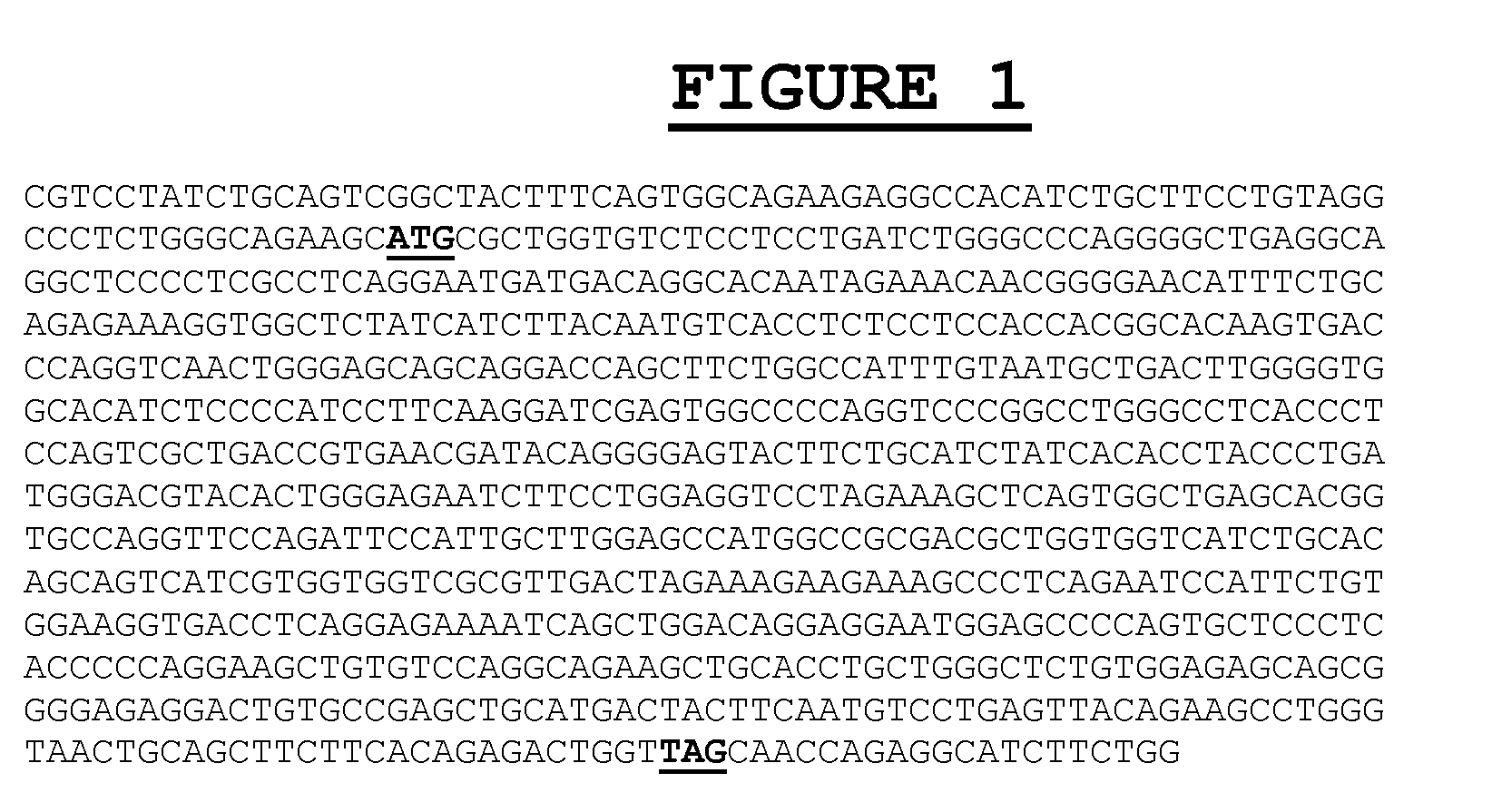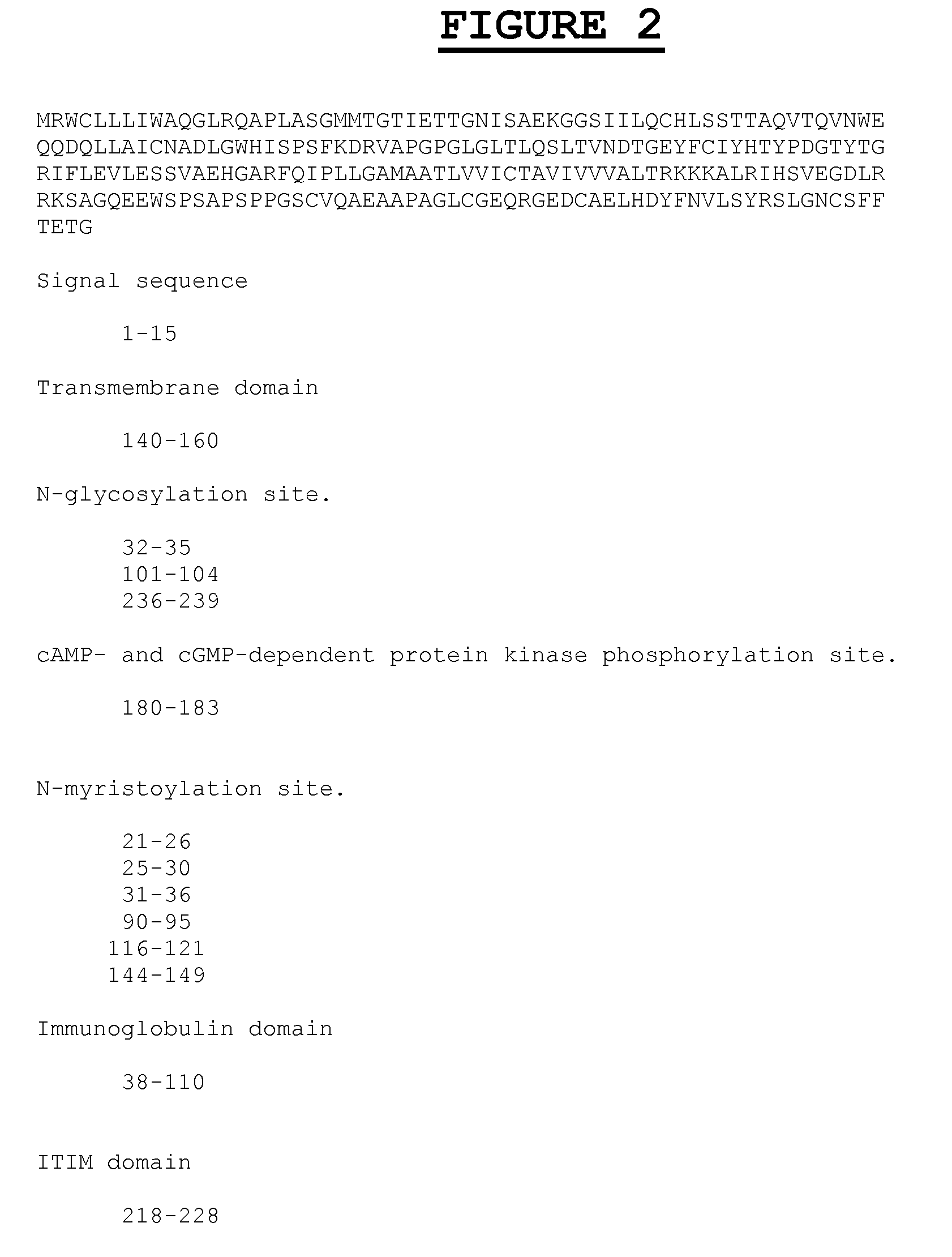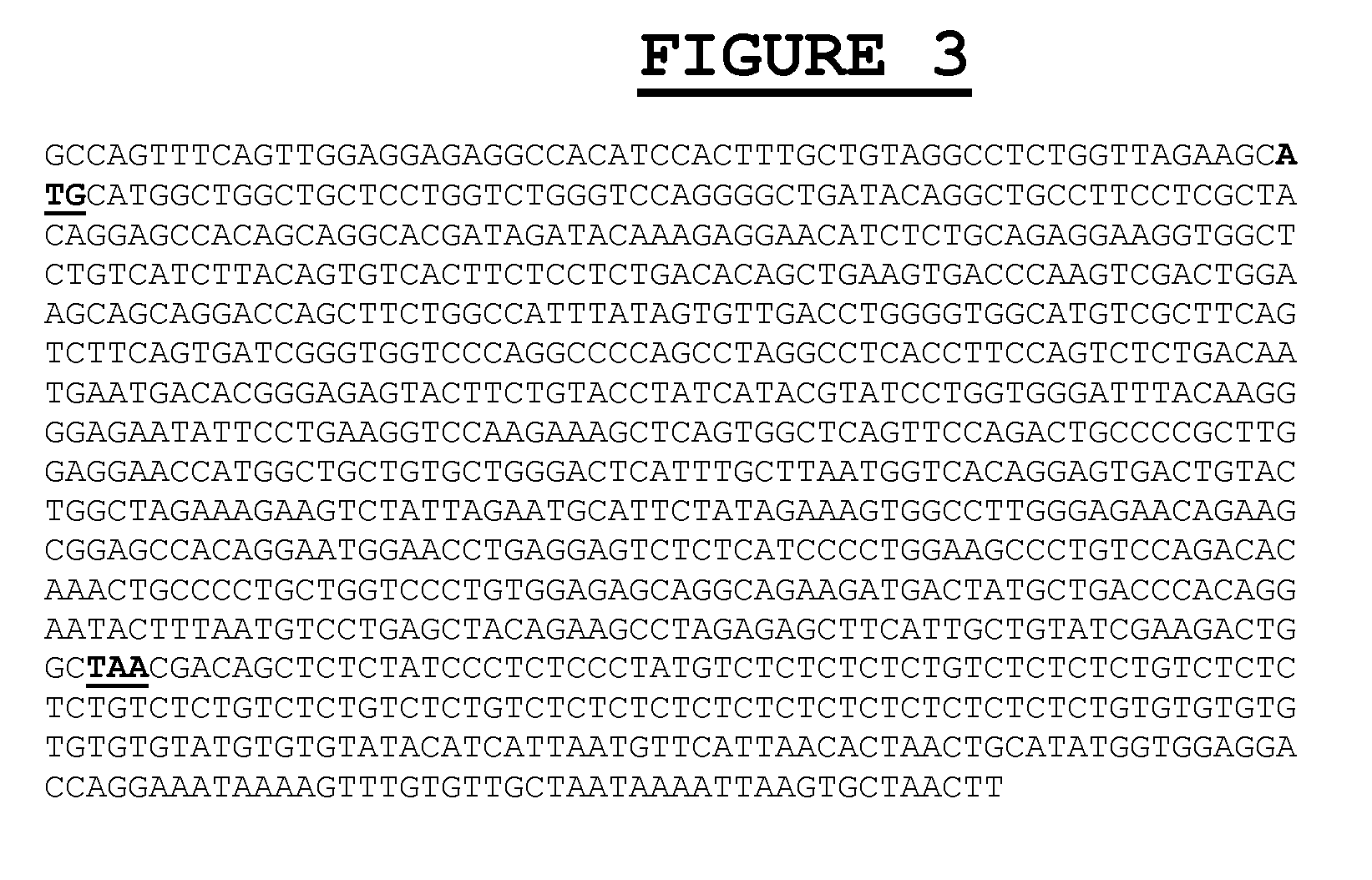Composition and methods for the diagnosis of immune related diseases involving the PRO52254 polypeptide
a polypeptide and immunological technology, applied in the field of immunological disorders, can solve the problems of chronic, unpredictable course, multiple ulcerations, fibrosis,
- Summary
- Abstract
- Description
- Claims
- Application Information
AI Technical Summary
Benefits of technology
Problems solved by technology
Method used
Image
Examples
example 1
Cloning of PRO52254
[0334]An expressed sequence tag (EST) DNA database (Merck / Washington University) was searched and an EST was identified which contained domains of interest, specifically Immunoglobulin (Ig) domain(s) and Immuno Tyrosine Inhibition Motif(s) (ITIM). The search was performed using the computer program BLAST or BLAST2 [Altschul et al., Methods in Enzymology, 266:460-480 (1996)] using as a comparison the domains of interest to a 6 frame translation of the sequences. Those comparisons resulting in a BLAST score of 70 (or in some cases, 90) or greater that did not encode known proteins were clustered and if necessary, assembled into consensus DNA sequences with the program “phrap” (Phil Green, University of Washington, Seattle, Wash.).
[0335]Based on the sequence as described above, oligonucleotides were synthesized: 1) to identify by PCR a cDNA library that contained the sequence of interest, and 2) for use as probes to isolate a clone of the full-length coding sequence ...
example 2
Microarray Analysis of Stimulated T-Cells
[0345]Nucleic acid microarrays, often containing thousands of gene sequences, are useful for identifying differentially expressed genes in diseased tissues as compared to their normal counterparts. Using nucleic acid microarrays, test and control mRNA samples from test and control tissue samples are reverse transcribed and labeled to generate cDNA probes. The cDNA probes are then hybridized to an array of nucleic acids immobilized on a solid support. The array is configured such that the sequence and position of each member of the array is known. For example, a selection of genes known to be expressed in certain disease states may be arrayed on a solid support. Hybridization of a labeled probe with a particular array member indicates that the sample from which the probe was derived expresses that gene. If the hybridization signal of a probe from a test (in this instance, activated CD4+ T cells) sample is greater than hybridization signal of a...
example 3
Microarray Analysis of PRO52254 in Psoriasis
[0349]Skin biopsies from psoriatic patients and from healthy donors were obtained. For each psoriatic patient, skin samples were taken from lesional and non-lesional sites. All of the psoriatic skin samples were analyzed for Keratin16 staining via immunohistochemistry and epidermal thickness. All samples were stored at −70° C. until ready for RNA isolation. The skin biopsies were homogenized in 600 μl of RLT buffer (+BME) and RNA was isolated using Qiagen™ Rneasy Mini columns (Qiagen) with on-column DNase treatment following the manufacturers guidelines. Following RNA isolation, RNA was quantitated using RiboGreen™ (Molecular Probes) following the manufacturer's guidelines and checked on agarose gels for integrity. The RNA yields ranged from 19 to 54 μg for psoriatic lesional skin, 7.7 to 24 μg for non-lesional matched control skin and 5.4 to 10 μg for normal skin. 4 μg of RNA was labeled for microarray analysis.
[0350]Biopsies were obtaine...
PUM
 Login to View More
Login to View More Abstract
Description
Claims
Application Information
 Login to View More
Login to View More - R&D
- Intellectual Property
- Life Sciences
- Materials
- Tech Scout
- Unparalleled Data Quality
- Higher Quality Content
- 60% Fewer Hallucinations
Browse by: Latest US Patents, China's latest patents, Technical Efficacy Thesaurus, Application Domain, Technology Topic, Popular Technical Reports.
© 2025 PatSnap. All rights reserved.Legal|Privacy policy|Modern Slavery Act Transparency Statement|Sitemap|About US| Contact US: help@patsnap.com



